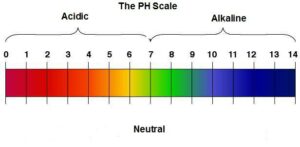Stomach Acid, a crucial part of our digestive system, plays a pivotal role in breaking down the food we eat and absorbing necessary nutrients. Yet, many of us are unaware of what constitutes an appropriate level of stomach acid. Understanding this is a key determinant of our overall gastrointestinal (GI) health, and can really help us to feel our best.
An imbalance in stomach acid levels can majorly impact digestion, potentially leading to a wide variety of health issues. Low vs. High Stomach Acid are equally troublesome for those affected, in different ways.
In this discussion, we aim to illuminate the role of stomach acid, how to recognise signs and symptoms of its imbalance, and shed light on the causes behind such issues. We shall also explore possible treatments and lifestyle changes that can assist in managing abnormal stomach acid levels.
Understanding these elements is fundamental to maintaining optimal digestive health and overall well-being.
If you would like to learn more then please keep reading…
Understanding High vs. Low Stomach Acid
Stomach acid, also known as gastric acid, is a fundamental component of our digestive system. It is composed of;
- Hydrochloric Acid (HCl),
- Potassium Chloride (KCl), and
- Sodium Chloride (NaCl).
This acidic mixture is secreted by cells in the stomach lining known as parietal cells. Stomach acid has a pH level typically between 1.5 and 3.5, which renders it highly acidic.
The primary function of stomach acid is to break down the food we eat. By breaking down the proteins into smaller peptides, our bodies can more readily absorb these nutritional substrates.
Additionally, stomach acid acts as a strong defence against harmful bacteria and pathogens that may be present in food or water, thereby helping to prevent illnesses.
pH Levels and Their Importance

The pH scale is used to determine the acidity or alkalinity of a solution. Acidic solutions have a pH level less than 7, neutral solutions have a pH of 7, and alkaline, or basic, solutions have a pH greater than 7. When it comes to stomach acid, maintaining the right pH is important for efficient digestion.
Too much or too little acid can lead to problems.
Low Stomach Acid
A condition known as hypochlorhydria refers to having low stomach acid. Common signs and symptoms of low stomach acid include bloating, indigestion, heartburn, vitamin and mineral deficiencies, and undigested food in stools. Contrary to popular belief, heartburn can often be a sign of low stomach acid, not high stomach acid, as the lower acid levels can result in partially digested food sitting in the stomach longer, causing discomfort and sometimes forcing acid up into the oesophagus.
Low stomach acid can lead to problems with nutrient absorption, as the body may struggle to break down and absorb nutrients from food. This can result in deficiencies, particularly in vitamins B12 and iron, which in turn can lead to symptoms such as fatigue, weakness, and anaemia.
High Stomach Acid
On the other end of the spectrum, high stomach acid, or hyperchlorhydria, can also cause issues. It can lead to painful symptoms such as gastritis, peptic ulcers, and gastroesophageal reflux disease (GERD). These conditions are often associated with a burning sensation in the stomach or heartburn, which is a result of the stomach acid irritating the lining of the stomach or the oesophagus.
High levels of stomach acid can also negatively impact the digestive tract’s ability to function properly. Over time, this can lead to complications such as inflammation, bleeding, or even the development of stress ulcers.
Striking a balance in the levels of stomach acid is critical to maintaining overall health. Both an excess and a deficiency of stomach acid can lead to a host of health problems. If you find yourself experiencing symptoms that suggest either high or low stomach acid, it’s advisable to seek help from a healthcare professional.
They are equipped to diagnose your condition accurately and can guide you in managing your symptoms through lifestyle modifications and medication, if necessary.
Signs and symptoms of Low/High Stomach Acid
Spotting the Signs and Symptoms of Low Stomach Acid
Low stomach acid, or Hypochlorhydria as it’s scientifically known, often goes undetected since its symptoms can be somewhat ambiguous. Nonetheless, it can generate a range of internal imbalances which can ultimately lead to various health issues. Typically, symptoms linked to low stomach acid might include bloating, belching or wind within an hour of eating, heartburn, or a sensation of fullness.
You might also experience nausea, specifically when consuming vitamins and dietary supplements, alongside constipation, and multiple food allergies.
In more severe cases, traces of undigested food in faeces, brittle, peeling, or cracked nails, dilated blood vessels on the cheeks or nose (excluding alcoholics), skin eruptions or acne, iron deficiency, inexplicable fatigue, or mood fluctuations could be an indication of low stomach acid.
Interestingly, hair loss in women can also hint at Hypochlorhydria.
An exceptional symptom of low stomach acid is a sense of unease and discomfort within the stomach, often described as feeling butterflies or experiencing anxiety. In the absence of sufficient gastric acids, your stomach can struggle to digest proteins and other food components, which can result in this feeling of constant discomfort.
Indications & Symptoms of Excessive Stomach Acid
Hyperchlorhydria, the medical term for unusually high stomach acid levels, can present an array of symptoms. The most prominent of which is known as heartburn – a painful burning sensation felt in the chest after ingestion of food, accentuated when in a reclined position or when bending.
Further symptoms may include bloating, frequent burping, an unpalatable sour taste in the mouth, mild cases of nausea, along with complications when swallowing food.
Extraordinary indicators such as incessant yet unexplainable weight loss, unusually constant dry cough, recurring instances of throat discomfort – soreness, hoarseness, or laryngitis – hiccups that seem to persist for an abnormally long duration and general discomfort within the top half of the abdomen or chest, known as dyspepsia, can also be experienced when stomach acid levels are unusually high.
Intense symptoms such as stools bearing blood or appearing unusually darkened, or instances of vomiting blood, signal potentially severe damage due to excessive stomach acid. These symptoms could be indicative of conditions such as peptic ulcers or gastrointestinal bleeding and necessitate immediate medical attention.
Individuals with excessive stomach acid may find themselves regularly resorting to antacids, a pattern that can potentially lead to detrimental health consequences if sustained long-term. Usually, these individuals experience discomfort following meals, particularly when consuming known stomach acid triggers such as spicy foods, citrus fruits, or caffeinated beverages.
Recognition and swift response to these symptoms could halt the progression of more serious conditions that result from chronic acid reflux, such as Barrett’s Oesophagus and Gastroesophageal Reflux Disease (GERD).

Causes of Low/High Stomach Acid
The Role and Composition of Stomach Acid
Stomach acid, scientifically referred to as gastric acid, serves a critical function in the digestion process. It chiefly comprises hydrochloric acid secreted by cells present in the stomach lining. The level of acidity is gauged on a pH scale which ranges from 0 (representing utmost acidity) to 14 (signifying utmost alkalinity).
Under typical circumstances, the stomach maintains a pH balance that ranges between 1.5 to 3.5, skewing towards a predominantly acidic nature. This acidic environment enables the effective breakdown of ingested food, facilitates the absorption of nutrients, and eliminates harmful bacteria.
Causes of Low Stomach Acid
Hypochlorhydria, or low stomach acid, can be driven by a range of factors. Ageing is one primary cause, as stomach acid naturally decreases as one grows older. Chronic stress can also lead to hypochlorhydria. When under stress, the body prioritises other functions over digestion, leading to reduced stomach acid production.
Certain medications, such as antacids and proton pump inhibitors (PPIs), also significantly lower stomach acid. PPIs are often prescribed to treat conditions like gastroesophageal reflux disease (GERD), leaving users with long-term reduced stomach acid.
Additionally, factors like an unhealthy diet, excessive alcohol consumption, and prolonged use of antibiotics can contribute to a decrease in stomach acid.
Certain diseases like Helicobacter pylori infection, pernicious anaemia, and autoimmune disorders like Hashimoto’s thyroiditis and Addison’s disease can also contribute to low stomach acid.
Symptoms of Low Stomach Acid
Low stomach acid can lead to numerous health issues, including poor digestion, malnutrition, and susceptibility to infections. Common symptoms include bloating, heartburn, and constipation. It’s also associated with deficiencies in certain nutrients, particularly vitamin B12, iron, and calcium, which all require an adequately acidic environment to be properly absorbed by the body.
Causes of High Stomach Acid
On the other hand, high stomach acid, or hyperchlorhydria, can also arise from various factors. Frequently, it’s due to Helicobacter pylori infection, which causes increased acid production. Other conditions, such as Zollinger-Ellison syndrome, a rare disorder involving the pancreas and small intestine, can also drive high stomach acid levels.
Lifestyle factors, like consuming a high-fat or spicy diet, can influence stomach acid levels. Stress and anxiety can also lead to an overproduction of stomach acid.
Overuse of anti-inflammatory painkillers, such as ibuprofen or aspirin, and certain medications, including those for thyroid problems, can also increase stomach acid levels.
Symptoms of High Stomach Acid
High stomach acid can lead to numerous uncomfortable symptoms, ranging from heartburn and indigestion to stomach ulcers. Patients might experience nausea, abdominal pain, and bloating. More serious complications can arise if high stomach acid goes untreated, such as Barrett’s oesophagus and an increased risk of oesophagal cancer.
Understanding the key differences between low and high stomach acid can often be challenging due to the similar symptomology exhibited by both conditions such as heartburn and indigestion. Consequently, to get an accurate diagnosis and suitable treatment plan, it is paramount to seek the advice of a healthcare professional.

Treating & Managing Low/High Stomach Acid
Gaining In-Depth Knowledge about Low and High Stomach Acid
When stomach acid levels are not balanced, an array of health issues can be triggered. Both low and high levels of stomach acid have unique symptoms and potential complications.
Hypochlorhydria, or low stomach acid, typically brings about digestive problems as a result of inadequate gastric acid production. On the other hand, an excess production of gastric acid is indicative of high stomach acid, which could consequently lead to conditions like gastroesophageal reflux disease (GERD).
Symptoms and Causes of Low Stomach Acid
Symptoms associated with low stomach acid include bloating, heartburn, belching, diarrhoea, and nutrient deficiencies, particularly that of vitamin B12. The causes are often varied and include factors like stress, ageing, and certain medications. Chronic conditions such as gastritis, undetected food allergies, and Helicobacter pylori infections are also common culprits.
Symptoms and Causes of High Stomach Acid
High stomach acid often manifests through symptoms like stomach pain, bloating, nausea, and heartburn, similar yet distinctly different from traits of low stomach acid. Moreover, excessive alcohol intake, a family history of GERD and physical stress are factors that could contribute towards increased stomach acid.
Managing Low Stomach Acid
For those afflicted with low stomach acid, dietary and lifestyle changes can be beneficial. It’s encouraged to incorporate foods like apple cider vinegar and ginger, both known for their stomach acid-promoting properties in your diet. Consumption of protein-rich foods that stimulate gastric acid production could also be beneficial. Betaine HCL supplements could also provide relief, though they should be used under a healthcare professional’s guidance. Refraining from drinking water during meals and chewing food thoroughly can also promote better digestion.
Managing High Stomach Acid
Managing high stomach acid involves both dietary changes and medication. Avoiding trigger foods, notably spicy, fatty, or acidic foods, can play a significant role. Incorporating alkaline foods, such as vegetables and doff foods, alongside lean proteins might help neutralise the stomach’s acidity. Antacids and Histamine blockers, usually available over the counter, are commonly used to manage high stomach acid. In severe cases, a doctor might prescribe Proton Pump Inhibitors (PPI).
When to Seek Medical Attention
For both low and high stomach acid conditions, it is prudent to consult a healthcare professional if symptoms persist or become severe. Seek immediate medical attention if you experience severe abdominal pain, difficulty swallowing, continuous vomiting, or sudden, severe chest pain.
Granted, while these symptoms can be indicative of other conditions, it never hurts to be abundantly cautious. A healthcare professional can administer appropriate tests and provide an accurate diagnosis, ensuring that you receive the right treatment for your situation.
In Conclusion
Understanding our bodies and the intricate functions they perform daily equips us significantly when dealing with health issues. An imbalance in stomach acid levels can prove quite disruptive, impacting our digestion and, by extension, our overall well-being. Recognising the signs, identifying the causes, and knowing how to manage, them are all significant in preventing and treating such imbalances effectively.
Changes in our diet, stress management techniques, and lifestyle shifts can all contribute to maintaining a balance. As knowledge grows, so does our capacity to ensure a healthier life.
So let’s utilize this understanding to foster better health, making conscientious decisions best suited to us.
I shall finish up here but if you would like to read more about Low Stomach Acid check our page HERE<<




Anxiety and Depression best ways to lower blood sugar BiOptimizers blood pressure supplements blood sugar support supplements Digestive Enzymes Supplement digital products Dr Sam Robbins Erectile dysfunction Exercise Gut Health Healthy Living heart health HFL how to lower blood sugar levels How To Lower Cholesterol insulin resistance joint health supplement Keto keto dieting Keto Diet Weight Loss leaky gut supplements leptin resistance list Magnesium deficiency Matt Gallant mental health multivitamins Nootropics nutrient supplements Probiotics Probiotic Supplements proteolytic enzymes reverse type 2 diabetes stress and anxiety stress relief vitabalance vitapost Wade Lightheart weight loss articles weight loss diet plans weight loss product reviews weight loss supplements weight loss supplements that work weight loss tea